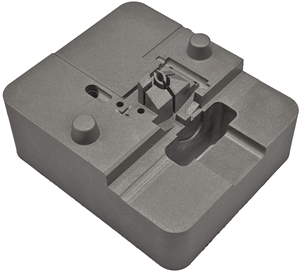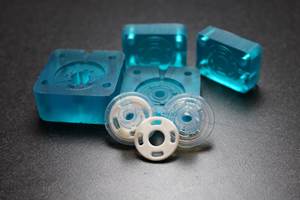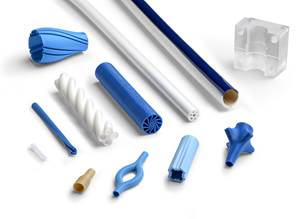New 3D Printer Looks To Compete With Injection Molding
The new machines are expected to enter the market starting in 2017.
Is 3D printing a viable alternative to injection molding? Well, the University of Sheffield (South Yorkshire, England) believes the answer is yes—and they hope to be the ones to achieve it. The university plans to build a machine that will produce parts up to three times larger and 100 times faster than current comparable additive manufacturing (AM) machines. The university says this makes it capable of challenging conventional injection molding for high volume production.
The £1million ($1.1 million) project is funded by the Engineering and Physical Sciences Research Council and touted as holding the potential to transform both manufacture and distribution. Low-cost, high volume additive manufacturing would enable parts to be made where they are needed, rather than produced centrally.
“Additive manufacturing is already being used to make tens of thousands of a product – such as iPhone covers – and ten years ago that volume was unthinkable,” said Neil Hopkinson from the University of Sheffield’s Faculty of Engineering. “This machine will enable serious production of volumes over one million, which is currently inconceivable. I believe history will repeat itself and in ten years’ time, producing volumes over a million using additive manufacturing will be commonplace.”
The machine is based on a technology developed by Hopkinson, who originally filed patents on the process as lead inventor at Loughborough University. The technology for HSS is being licensed to industrial machine manufacturers on a non-exclusive basis. The new machines are expected to enter the market starting in 2017.
The process, called high speed sintering (HSS), selectively fuses polymer powder layer by layer, similar to other AM processes. However, instead of using lasers, HSS prints infra-red-absorbing ink onto a powder bed. Once a layer has been printed, it is exposed to infra-red light, which heats the powder covered by the ink, causing it to fuse, while the rest of the powder remains cool.
The new machine will be able to make parts up to about the size of the washing machine. The speed will depend on the size of the product, but the team estimate that small components will be built at a rate of less than one second per part, allowing AM to compete with injection molding for high volume manufacturing.
“With additive manufacturing, you can make more complex parts and make each part unique,” Hopkinson says. “You can also make the parts where they are needed, which reduces transport costs. Additive manufacture also limits the risks involved. With injection molding, you have to make tools, which is expensive and has to be done in advance. With AM, you miss out that stage, moving straight from design to manufacture.”
The machine will initially be built in the University of Sheffield’s Advanced Manufacturing Research Centre (AMRC) before installation in the University’s Centre for Advanced Additive Manufacturing (AdAM), of which Hopkinson is Director.
“This machine will be built completely from scratch, drawing on all the skills and expertise of our design engineers,” Andy Bell, from the AMRC’s Design Prototype and Test Centre (DPTC). “We have been involved in developing machines with commercial partners in the past, but this will be the biggest machine we have ever created.”
Related Content
Additive Fusion Technology Optimizes Composite Structures for Demanding Applications
9T Labs continues to enhance the efficiency of its technology, which produces composite parts with intentionally oriented fibers.
Read MoreProduction Tool, Prototype Time
Mantle's metal 3D printing technology targeted toolmaking and injection molders and moldmakers are taking notice.
Read MoreFreeform Injection Molding Eases the Path to Medical Device Product Testing
A development and manufacturing service provider is using dissolvable molds to build injection molded silicone prototypes.
Read MoreDuPont Buys Medical Product Manufacturer Spectrum Plastics
Purchase price of $1.75 billion for leading supplier of extruded, molded, and 3D printed medical components.
Read MoreRead Next
See Recyclers Close the Loop on Trade Show Production Scrap at NPE2024
A collaboration between show organizer PLASTICS, recycler CPR and size reduction experts WEIMA and Conair recovered and recycled all production scrap at NPE2024.
Read MoreMaking the Circular Economy a Reality
Driven by brand owner demands and new worldwide legislation, the entire supply chain is working toward the shift to circularity, with some evidence the circular economy has already begun.
Read More




















